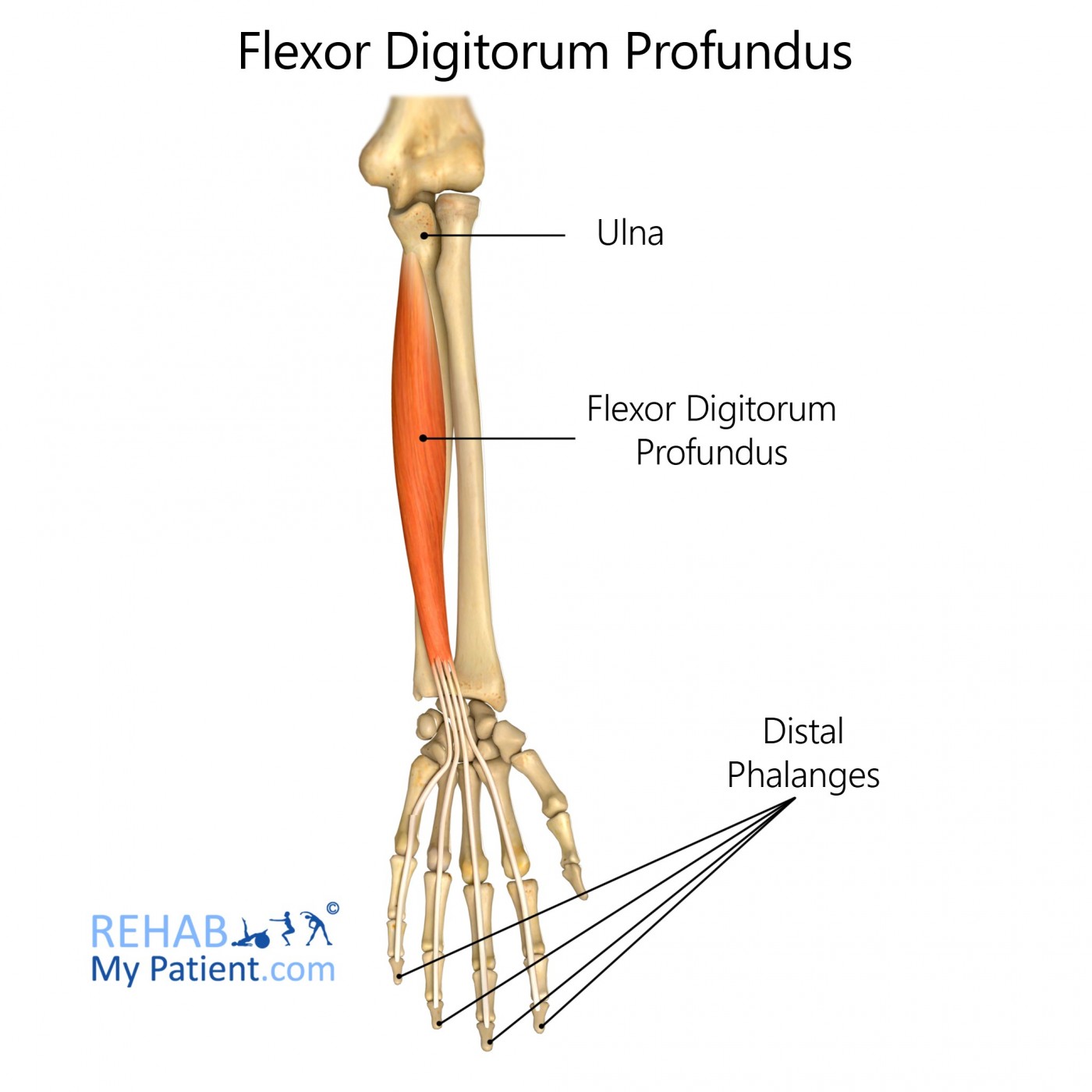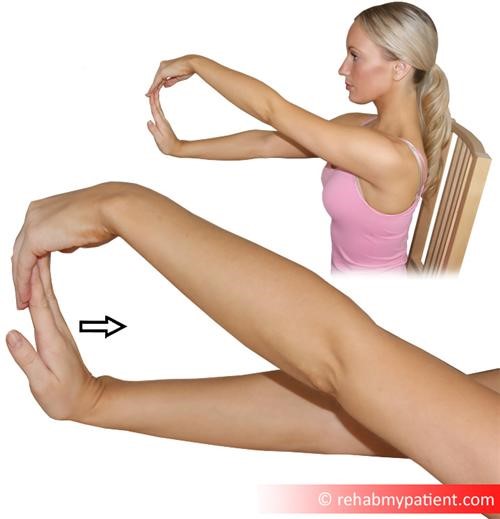
General information
It is a muscle of the forearm that serves to flex the upper digits/fingers. It is considered an extrinsic hand muscle because it acts on the hand even though its belly is situated in the forearm. Along with two other muscles, the flexor digitorum profundus forms the deep-rooted layer of lower, anterior forearm muscles.
Literal meaning
The name of this muscle translates in English to “deep flexor of the fingers”.
Interesting information
Inflammation and swelling of this muscle can lead to carpal tunnel syndrome as its tendons go through the carpal tunnel.
The flexor digitorum profundus attaches proximally to the radial bone of the forearm, close to radial tuberosity.
It is one of only two flexor muscles that is not singularly innervated by the median nerve.
Origin
Flexor digitorum profundus muscle originates in:
· The upper, proximal three fourths of the frontal and median region of the ulna.
· The interosseous membrane – a wide and thin sheath of fibrous tissue that acts as separator for numerous bones of the body.
· The antebrachial fascia, which is a deep layer of fibrous, connective tissue found in the forearm.
Insertion
The muscle branches out into the palmar base of the bone located at the tip of digits two to five.
Function
Primarily, it is responsible for the flexion of the distal interphalangeal joints of the medial four upper digits; but it also functions to flex the following:
- Metacarpophalangeal joint (MCP) – that which joins the metacarpal bones to the closer end of the first phalanges
- Proximal interphalangeal joints (PIJ) - that which joins the first and second phalanges.
- The wrist.
Nerve supply
The midsection of the muscle that flexes the fourth and fifth digits is innervated by the ulnar nerve (C8, T1), however, the lateral section, which flexes the second and third digits, is supplied by the anterior interosseous branch of the median nerve.
Blood supply
The ulnar artery, anterior interosseous artery, and common interosseous artery.

Relevant research
Electromyographic observation of the flexor digitorum profundus after flexion and extension of individual digits of the left hand suggests only partial, although functional, segmentation of the muscle in humans. This may be a contributing factor in the inability of humans to produce entirely independent movement of some digits.
Reilly, K. T., & Schieber, M. H. (2003). Incomplete functional subdivision of the human multitendoned finger muscle flexor digitorum profundus: an electromyographic study. Journal of neurophysiology, 90(4), 2560-2570.
Flexor Digitorum Profundus exercises
Stretches are an excellent way of exercising your forearm flexor muscles. Start by holding your arm straight in front of you. Use the fingers of your left hand to pull each finger of the right hand (index to little finger) backwards. Hold for 20 seconds, and repeat twice on both hands.

You can also strengthen the extensor compartment of the forearm by resting your arm on a table, take hold of a dumbbell (or any other similarly heavy object) and, using only your wrist, lift the dumbbell repetitively 8-10 times. Repeat using the other arm.

An exercise band is also an effective exercise tool. Tie one end to the edge of a table, or place a weight on it. Hold the other end, with your forearm resting on a table. Bend your wrist towards you, to strengthen the forearm extensor muscles.

Sign Up
Sign up for your free trial now!
Get started with Rehab My Patient today and revolutionize your exercise prescription process for effective rehabilitation.
Start Your 14-Day Free Trial